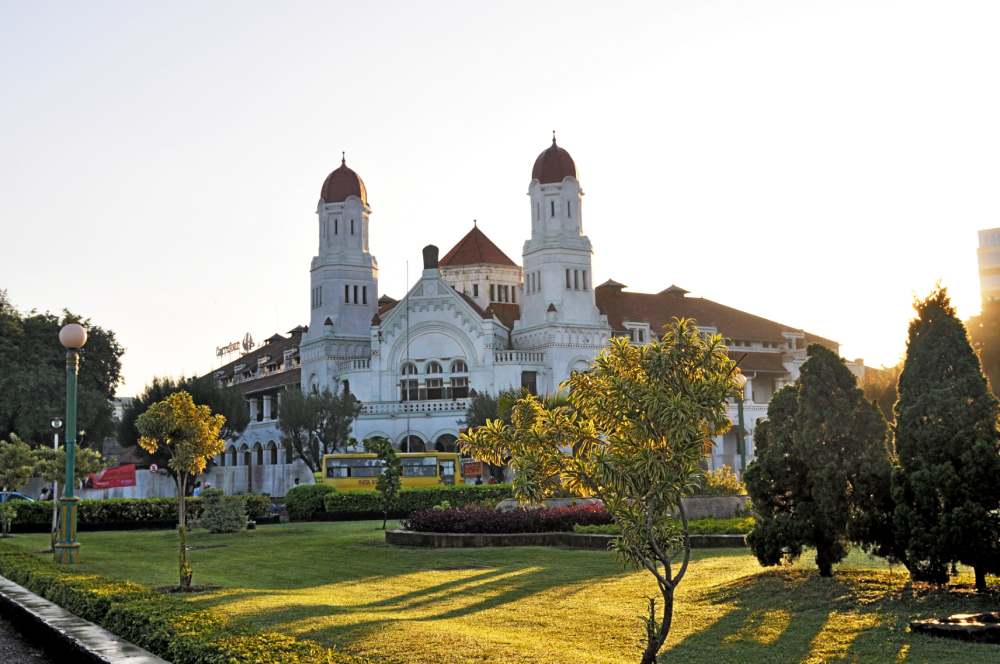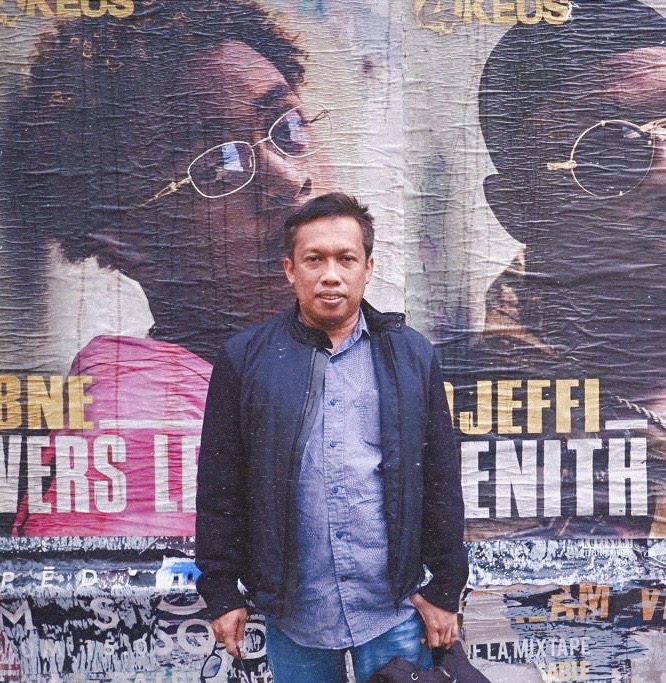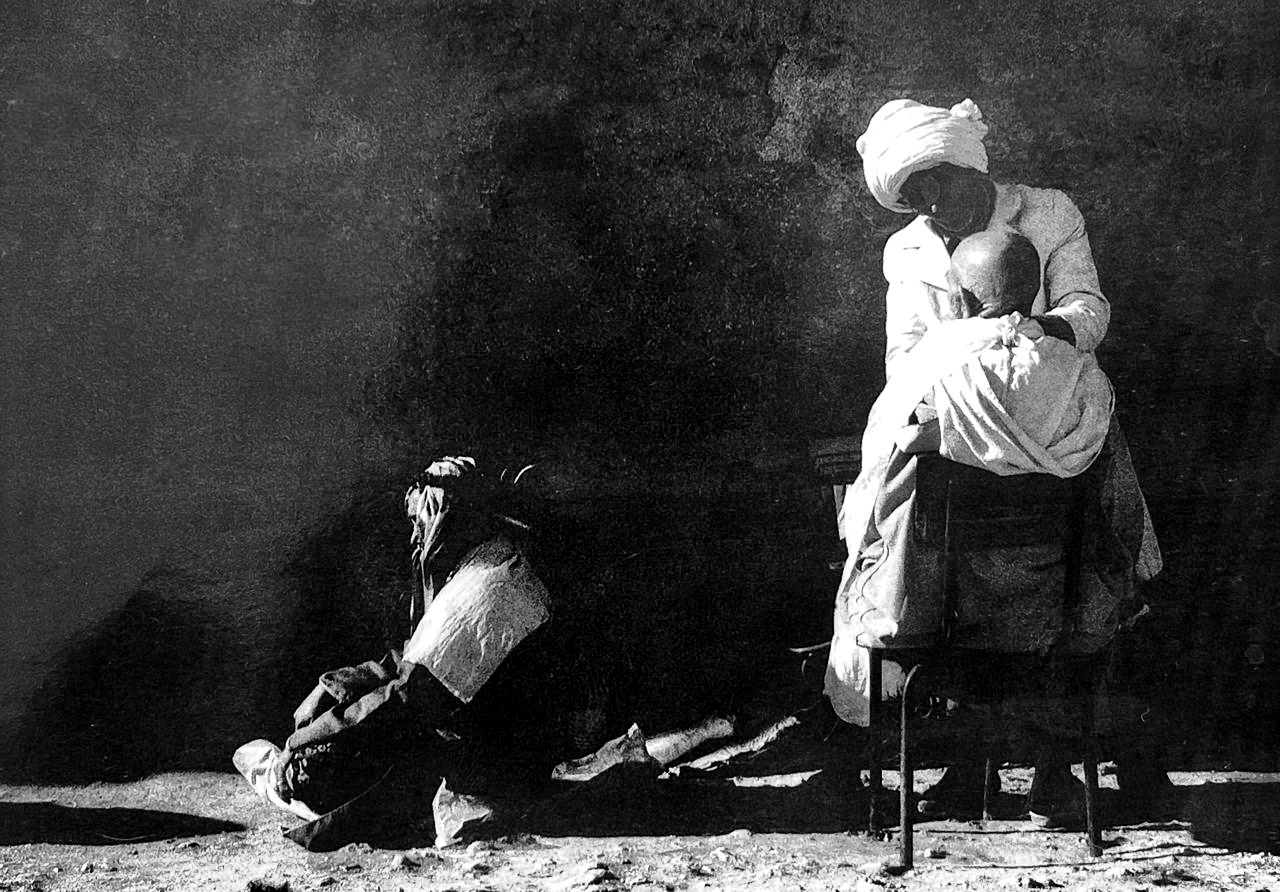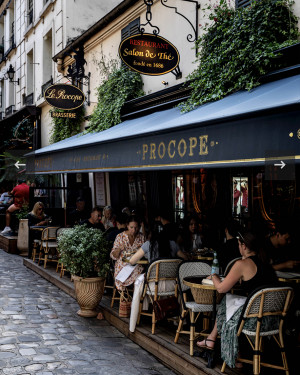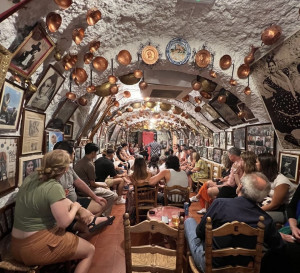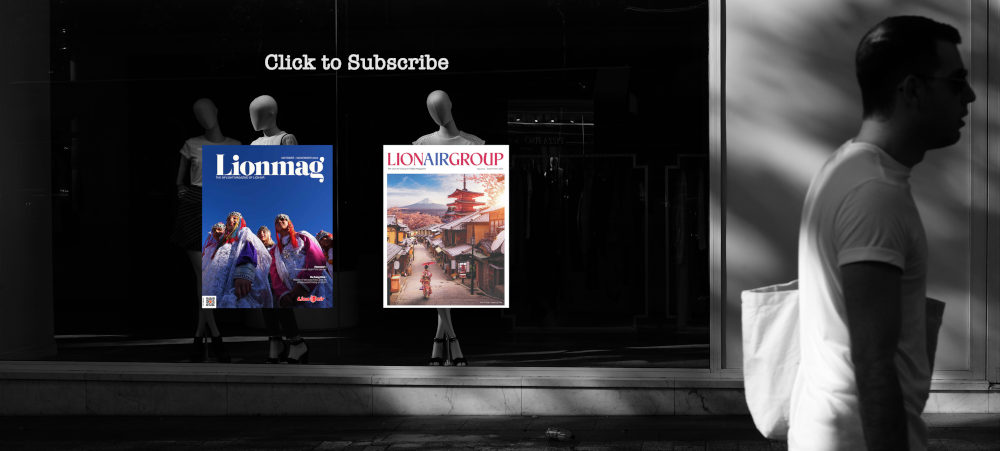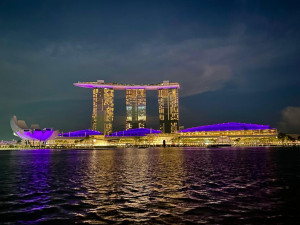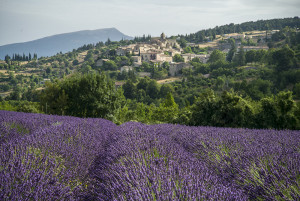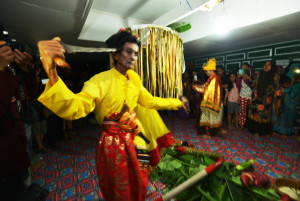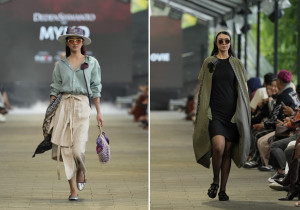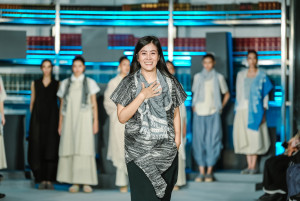Back on the bike, we followed the river north a short way, admiring the old style Chinese houses on the opposite side of the river, before turning left along Jl. Agus Salim and arriving at Pasar Johar, Semarang’s traditional market. Built in Dutch times the interior of old market is impressive when seen from its upper floor, with stalls stretching into the distance and thick pillars supporting the roof that has been extended to cover the entire market.
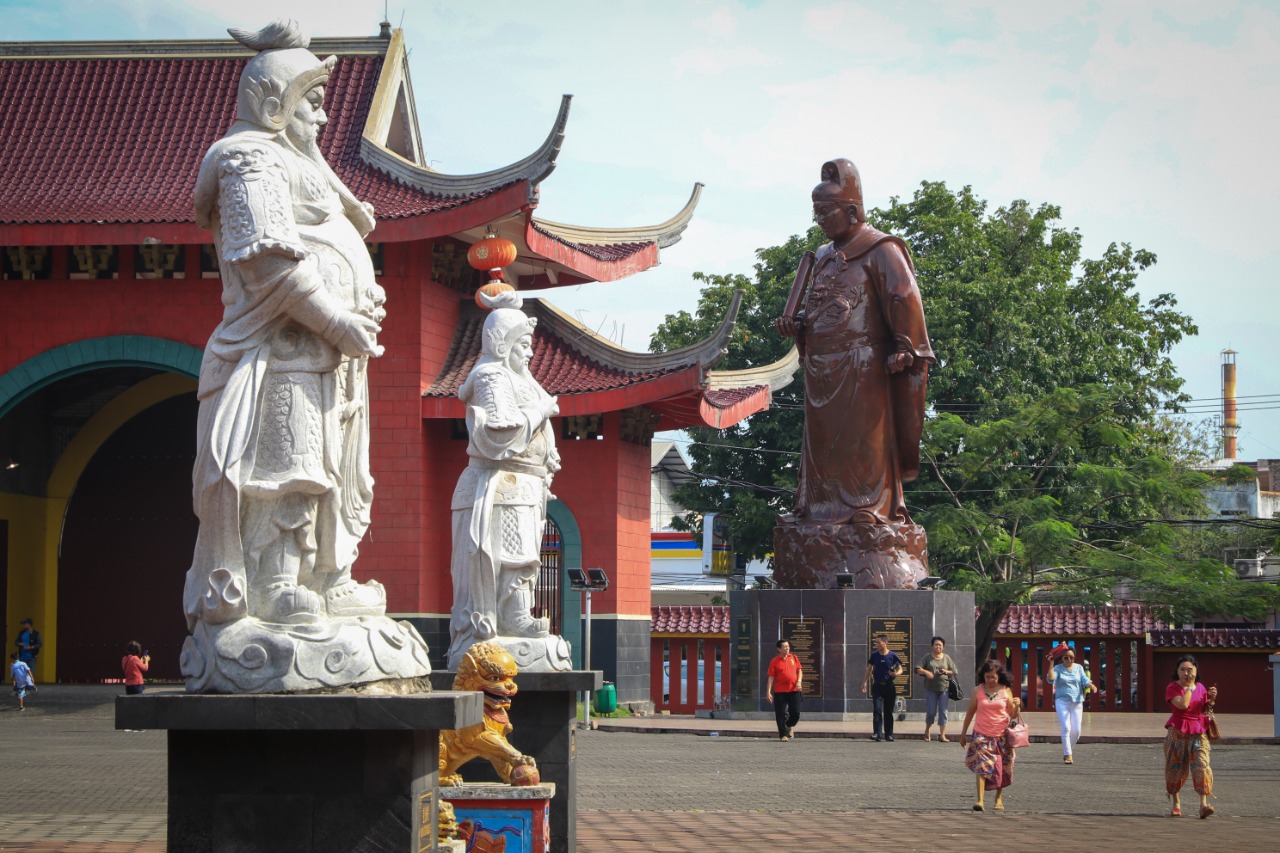
Admiral Cheng Ho. Photo Dody Wiraseto/LIONMAG
Across the road from Pasar Johar is Semarang’s fish market — not fish for the dining table, but ornamental fish. Here exotic fish of all sizes can be purchased, including large koi carp.
After the fish market it was back onto the motorbike to head north to Semarang harbor. We took a route that avoided going through the old city, as the area between Outstadt and the port has become notorious for flooding and bad roads, a consequence of climate change and rising sea levels. But the alternative route wasn’t all plan sailing: a puncture resulted in a 40-minute delay while a wiry little old man “cooked” a new patch of rubber onto the inner-tube by the side of the road.
Then we were on our way again, arriving at the wharves of Tambak Lorok, where several traditional wooden pinisi boats were moored. While some of the pinisi have been converted into luxury vessels for tourists, most continue to carry cargos, mainly of wood, along the north coast of Java and across the Java Sea. A curious reminder of bygone days, the harbor is also home to a Dutch-era lighthouse, which still seems to be operational.
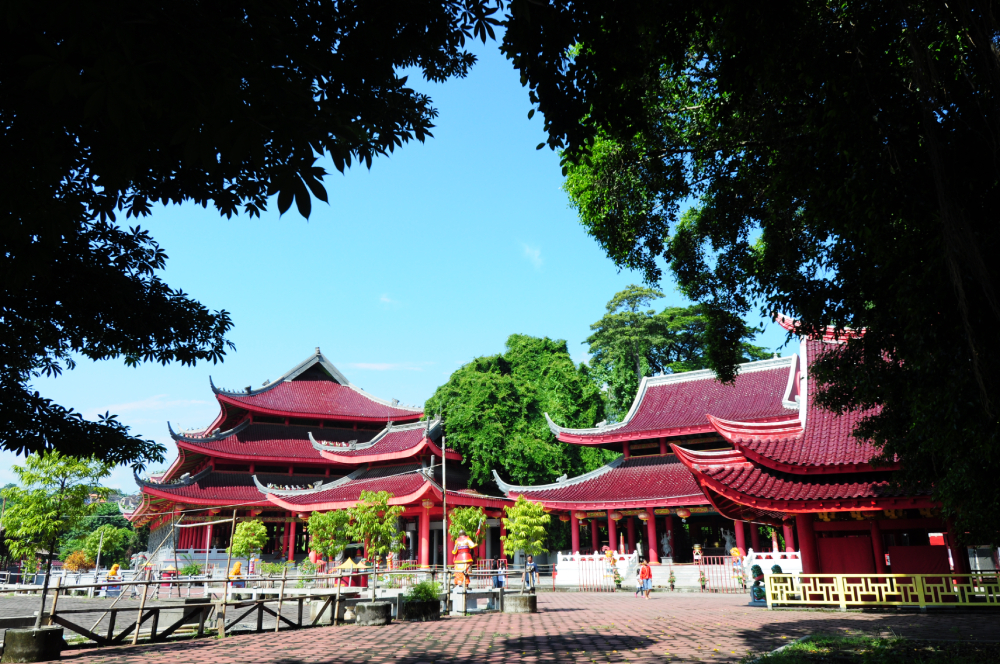
Sam Poo Kong temple. Photo Makhfud Sappe/LIONMAG
Back on the bike again, this time we headed a few kilometers to the southwest of the city center to the Sam Poo Kong temple, also known as Gedung Batu, built in honor of Admiral Cheng Ho, the famous Muslim enuch of the Ming dynasty. Cheng Ho led fleets on seven expeditions to Java and other parts of south-east Asia, and is also credited with helping to bring Islam to Indonesia in the fifteenth century, which explains why the temple is also revered by Muslims.
A statue of the admiral stands before the main section of the temple. Huge red candles, together with an impressive new south gate to the temple, have been donated by some of Indonesia’s wealthiest ethnic-Chinese families and conglomerates.
No visit to Semarang would be complete without a trip to the old colonial landmark building of Lawang Sewu, which in Javanese means the house of one thousand doors, the number of doors that the building is said to possess. Apparently, nobody knows the exact number for sure because for some strange reason whenever people try to count the doors they always come up with a slightly different figure.
Built in 1863, the building housed the regional headquarters of the Dutch, and is a curious mixture of mosque-like Arabic towers with European colonial design. It was later taken over by the Japanese during their occupation. We were given a guided tour of the partially water-filled underground passages, which the Japanese used as a prison and a torture chamber. Although we didn’t come across any, the building is said to be home to numerous ghosts, no doubt the wandering souls of Dutch colonial figures and the Javanese victims of the Japanese.
Semi-derelict today, the building is finally receiving the attention is deserves and modest renovation work has started. The central stairwell of the main section houses some striking stained-glassed windows, although the ongoing renovations to the building meant that the stairwell was off limits when we visited.
With evening now upon us it was time to visit another of Semarang’s colonial-era institutions, Toko Oen, the city’s oldest restaurant dating from 1936. Situated in a rather run down building on Jl. Pemuda, you would never suspect from its outside appearance that behind the shutters is a quintessential Dutch colonial teahouse.
The main door opens onto a counter stocked with jars full of cakes and cookies, opposite a grand piano that has been there since 1936. Further inside in a room on the right is the main restaurant, largely as it would have been 70 years ago. The original green and white tiles cover the floor and match the tablecloths, while the colonial ceiling fans are given a little extra help these days by AC units discreetly hidden behind wooden shutters.
On my visit the clientele seemed to be predominantly local Chinese families, but Oen’s is apparently also popular with Dutch tour groups. Locals dig in to European beefsteak, or Indonesia and Chinese favorites. After a long day on the bike I also enjoyed a couple of well-deserved and very cold Bintang beers — a fitting end to an interesting day of discovery in Semarang.
Previous :
Semarang a city blending dutch colonial history with javanese and chinese culture
